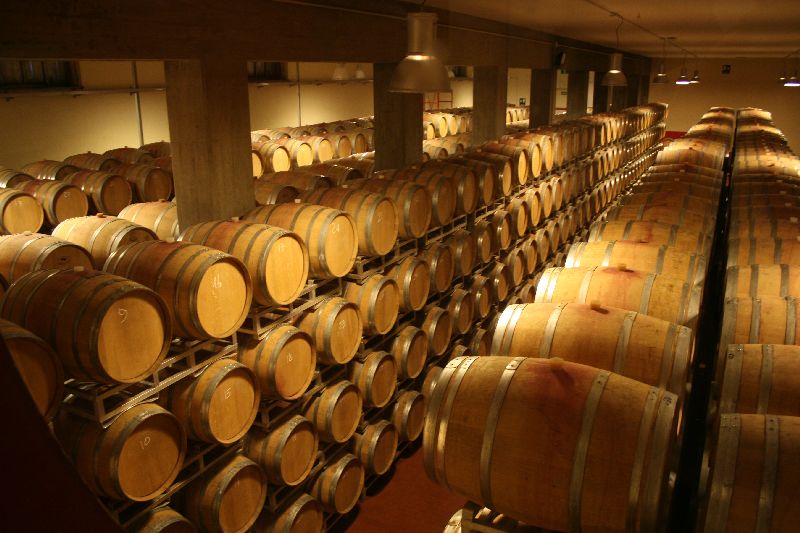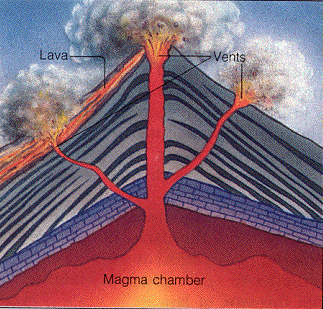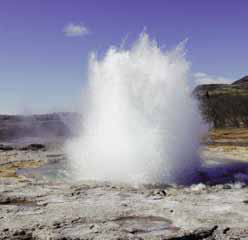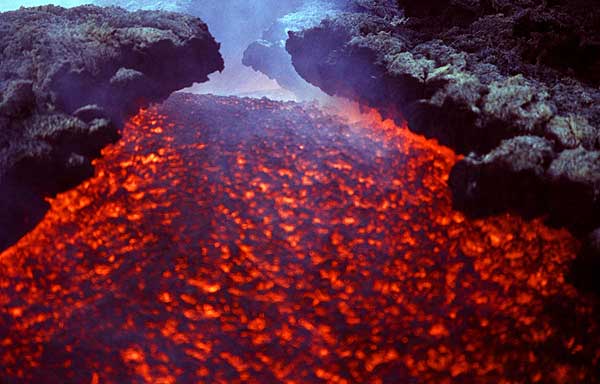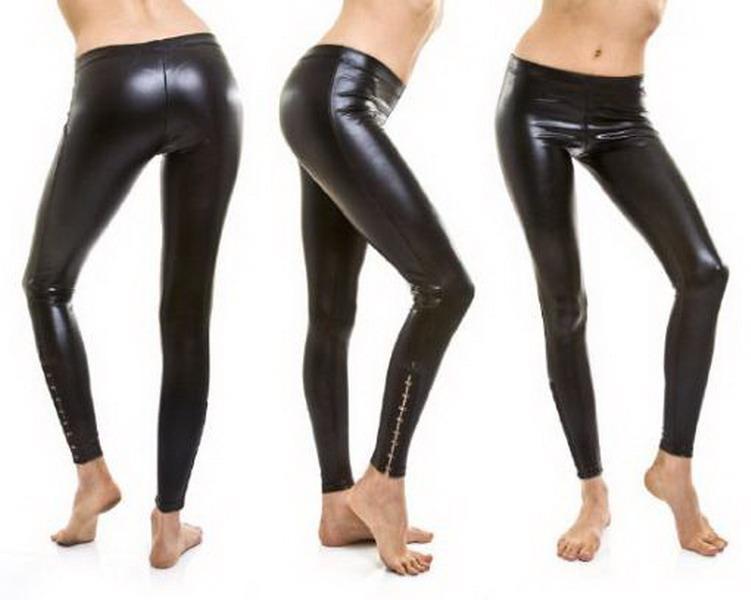When one says rice, a plethora of visions comes to my mind... Varying from a chinese family having a meal made from rice, through growing rice at rice fields to me, sitting in a shopping center enjoying a chinese food, which of course, is served with rice.
However, some things about rice could be be more than surprising!
Chinese scientists came up recently with a suggestion, which could make a break-through in producing artificial blood, namely a part of the blood - protein called albumine. That is - extracting this human-blood protein from rice seeds!
Above, you can see the structure of albumine. As you can see, it is a very complicated structure and preparing it ''in vitro'' would be extremely difficult.
''When extracted from rice seeds, the protein is "physically and chemically equivalent to blood-derived human serum albumin (HSA)," said the research in the US-published Proceedings of the National Academy of Sciences.
So far, the demand for albumine has been solved by blood donations. Yet the new way to produce this protein has to be tested on people and undercome further research before it would be placed on the market.
Hopefully, we could exploit this widest-grown food more than just to eat one day! :-)
Sources:
http://www.freefoto.com/images/09/33/09_33_5---Chinese-Food_web.jpg
http://www.cchonline.eu/img/didattica/albumina.jpg
http://media.novinky.cz/100/131006-top_foto1-o5v3t.jpg
Sketches from the chemistry and related topics, which interest me, and I hope they will interest you,too...
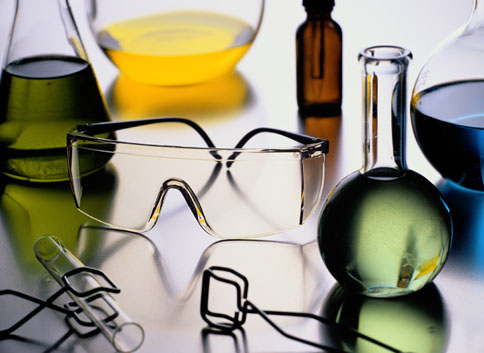
Friday, November 18, 2011
Friday, August 5, 2011
How to utilize electromagnetic energy from the air?
I am sorry for my lap in posting, but I haven't had login info for my blog, after I had gone to Germany about one and half month ago... Now I am back and the story continues!
Imagine, you wouldn't need any electric wires at home, you wouldn't have to pay for any electricity bills...Everything would be charged from the air!...
Well, this claim is rather bombastic than real, but catching energy from the air (to some extent) is now really possible! Scientists have developed interesting method, how to utilize electromagnetic energy which surrounds us everywhere... from TV broadcasting, radio transmitters, cell phone network and even from satellite communication systems!
Georgia Tech School of Electrical and Computer Engineering professor Manos Tentzeris holds a sensor (left) and an ultra-broadband spiral antenna for wearable energy-scavenging applications.
(source: sciencedaily.com)
The truth is, that for many decades we are surrounded by this energy. However, no one was able to use it so far.
Researchers at GTS have come with wide-band antennas, which can scavenge electromagnetic energy in many different electromagnetic ranges. It varies from frequencies of a FM radio to radars ( that is 100 MHz to 15 GHz)
The experiments showed it can't be used for big machines in the close future because of generating only hundreds of microwatts of energy. However, scientists promise that they can increase this cipher up to 50 miliwatts.
It means: we have a way to run small self-powered sensors or microprocessors!
We can use them in many fields: for biological, chemical, heat and stress sensing for defense and industry; or radio frequency identification (RFID) tagging for manufacturing and shipping, and monitoring tasks in many fields including communications and power usage.
Then, for instance, it could help charging batteries with solar energy : energy from the sun during the day and at night from these scavenging devices (or at least protecting it from discharging)
It can be mostly uselful at the airports, where radars and other communication devices emit a lots of energy.
Thanks to this new electricity-scavenging technology it could be used, for example, to run wireless sensors for detection of explosives!
Furthermore, sensors placed on food could detect chemicals, which are commonly produced, when the food is heading to the end of its durability and deteriorating in quality and thus let know consumers of it.
The possibilities, where to use these sensors, are really broad and I am looking forward to put it into practical use at home :-)
Sources:
http://www.sciencedaily.com/releases/2011/07/110707131545.htm
http://www.novinky.cz/veda-skoly/239464-vedci-nasli-zpusob-jak-vyuzit-energii-ze-vzduchu.html
superstock.com
http://thinkengine.blogspot.com/
http://3enscience.wordpress.com/2010/06/28/the-electromagnetic-spectrum-how-do-i-remember-it/
http://i.treehugger.com/images/2007/10/24/microsensor.jpg
Imagine, you wouldn't need any electric wires at home, you wouldn't have to pay for any electricity bills...Everything would be charged from the air!...
Well, this claim is rather bombastic than real, but catching energy from the air (to some extent) is now really possible! Scientists have developed interesting method, how to utilize electromagnetic energy which surrounds us everywhere... from TV broadcasting, radio transmitters, cell phone network and even from satellite communication systems!
Georgia Tech School of Electrical and Computer Engineering professor Manos Tentzeris holds a sensor (left) and an ultra-broadband spiral antenna for wearable energy-scavenging applications.
(source: sciencedaily.com)
The truth is, that for many decades we are surrounded by this energy. However, no one was able to use it so far.
Researchers at GTS have come with wide-band antennas, which can scavenge electromagnetic energy in many different electromagnetic ranges. It varies from frequencies of a FM radio to radars ( that is 100 MHz to 15 GHz)
The experiments showed it can't be used for big machines in the close future because of generating only hundreds of microwatts of energy. However, scientists promise that they can increase this cipher up to 50 miliwatts.
It means: we have a way to run small self-powered sensors or microprocessors!
We can use them in many fields: for biological, chemical, heat and stress sensing for defense and industry; or radio frequency identification (RFID) tagging for manufacturing and shipping, and monitoring tasks in many fields including communications and power usage.
Then, for instance, it could help charging batteries with solar energy : energy from the sun during the day and at night from these scavenging devices (or at least protecting it from discharging)
It can be mostly uselful at the airports, where radars and other communication devices emit a lots of energy.
Thanks to this new electricity-scavenging technology it could be used, for example, to run wireless sensors for detection of explosives!
Furthermore, sensors placed on food could detect chemicals, which are commonly produced, when the food is heading to the end of its durability and deteriorating in quality and thus let know consumers of it.
The possibilities, where to use these sensors, are really broad and I am looking forward to put it into practical use at home :-)
Sources:
http://www.sciencedaily.com/releases/2011/07/110707131545.htm
http://www.novinky.cz/veda-skoly/239464-vedci-nasli-zpusob-jak-vyuzit-energii-ze-vzduchu.html
superstock.com
http://thinkengine.blogspot.com/
http://3enscience.wordpress.com/2010/06/28/the-electromagnetic-spectrum-how-do-i-remember-it/
http://i.treehugger.com/images/2007/10/24/microsensor.jpg
Tuesday, June 14, 2011
Said to cure aging, cardio ilnesses while having great taste! White or red?
Wine, wine, wine... the drink of noblemen, gods, gentlemen and others with sophisticated taste. Drinking wine is delightful, some people consider it as even an art.
It is said that one glass of wine per day can cure better than many modern medicaments. It can presumably reduce the amounts of cholesterol in your blood-vessels and otherwise in the whole bloodstream. Moreover, it supports your digestive system and it is an important antioxidant.
I would like you to learn something more about the history of this drink as well as production and types of wine.
The oldest wines can be traced back in the time about 14,000 years BC! not far from Geneva lake, Switzerland. Those people used to drink partly fermented must. Later on, wine was recognized by Sumerians and Egyptians as a noble drink. In fact, Egyptians invented bottles for wine which they covered with hieroglyphes.
However, it were Greeks, who elevated the act of drinking wine to a social event and gradually to an art. Wine became the source of inspiration for many artists, writers and poets.
Even more important nation, to which wine owe its worldwide recognition, were Romans. These were successful warriors and invaders and they brought grapevine as well as the Greek tradition of wine into many parts of the at-that-time-known world.
Surprisingly, Greeks and Romans always mixed their wine with water.
Well, enough about history :-)
Have you ever thought about how wine is made? Of course, everyone would remeber it is from grapes, but what the process itself?
First, what is wine? It is an alcoholic beverage, made of fermented fruit juice, usually from grapes.
The fine process of making wine includes several steps:
1. Growing wine at vineyards
Every experienced winemaker would probably confirm you, that ''growing wine properly is the half of the success'' In fact, there are many factors to be concerned with : Right average temperature, enough moist for vineyards, the quality of the breed of grapevine and right soil are only few among others.
We can also conclude by our own brilliance of mind their other claim : '' Wine is grown at vineyards, not in cellars''
2. Pressing of wine
Within this process, we add preassure to wine in order to separate wine or juice from grapes and grape skins. It is very vital, because it directly influences the final quality of the wine. The more meticulous pressing, the better quality of a wine. It is an imperative to achieve the highest possible yield from grapes while not extracting particles of bitter taste like tannines. The liquid created by pressing before fermentation is called must, or stum.
For instance, in the area of Champagne, France, there is strongly stressed the quality of pressing and as a result, we have one of the best wines worldwide from that area.
There is one foregoing process called 'crushing' where, especially by small winemakers, we can perceive barefoot people standing on a top of a wine vessel trampling it. (I would say, it is very known from films)
3. Fermentation
This is process, where chemistry for the first time steps in.
Basically, we transform simple carbohydrates like glukose or fruktose
| Glukose |
into alcohol (ethanol) and carbon dioxide (which is released in the air in the case of non-sparkling wine)
C6H12O6 (carbohydrate) + catalyst yeast = 2 C2H5OH (alcohol) + 2 CO2 (carbon dioxide) + heat
It is very important to maintain keen attention on this process. Fermentation runs either in old oak barrels or in stainless tanks in larger facilities.

We have to also mention yeast (eukaryotic micro-organisms classified as Fungi) which actually run the fermentation by their biochemical way.
Since we have more than 1500 species, we can get unpredictable results depending on the exact types of yeast that are present, thus, cultured yeast is often added to the must.
During fermenantion, the vessel with wine absorbs heat and therefore, winemakers try to cool the vessels in order to prevent aromatic compounds from evaporating. Moreover, whatever type of wine we want to produce, we should always keep it clean in the cellar with wine vessels in order to avert microorganisms to proliferate there.
Apart from alcoholic fermenation, we have also malolactic fermentation. Here we converse tang-tasting malic acid to lattic (or milk acid) which has more mild and pleasant taste and aroma.
 |
| malic acid |
 |
| latic acid |
By now, after the three previous steps, we have somehow ''raw'' wine and we have to do several more things in order to get it bottled and delivered to our consumption. :-)
a) Preservation additives: It generally means suplhurization of wine. A small amount of suplhur dioxide is added to wine and it naturally creates a thin layer above the wine in the barrel a thus it protects wine from outside environment.
b) Clarification of wine: this process involves removing insoluble and suspended materials that may cause a wine to become cloudy, gassy, form unwanted sediment deposit or tartaric crystals.
It includes fining and eggwhite (or bentonite) are for this usually used.
Then there is of course filtration - we use either natural gravitation forces or sometimes centrifuges. Nonetheless, some red wines are not filtrated at all.
Last very interesting process, I haven't been aware of at all, is flotation. Here we inject some amount of oxygen or nitrogen gas in the bottom of the tank and as it goes up through the vessel, it adsorbs grape fragments and other small solids.
| description of flotation, here in mining as I haven't found any pic from flotation of wine |
c) Aging of wine
is defined as ''ability to potentially improve in quality, distinguishes wine from most other consumable goods''
In fact, the unique composition of each wine, depending on factors like region of growth or a breed, gives to it sometimes possibilities to alter its chemical composition (sugars, acids and so one) through years which can result into more delicious savoring for a consumer.
For wine aging, the oak barrels, or (barriques) are used. they not only preserve aging wine in natural environment, but also can improve the taste themselves. They can absorb some bitter particles (like some acids or tannines) or for example add to a wine a tone of vanilla, when the oak wood is saturated with vanilla.
and finally,
Differences among wines
As we know, we can sort wines into many and many cathegories. I don't want to borther you with all of them , so I am going to elaborate on it only very briefly.
Red x White
The difference is not only in breed of wine, but also in processing it.
Red wine is made from the must (pulp) of red or black grapes that undergo fermentation together with the grape skins.
White wine is made by fermenting juice which is made by pressing crushed grapes to extract a juice; the skins are removed and play no further role.
Amount of sugars
we can also divide wines according to the content of sugars, which did not undercome fermentation.
Dry wine : < 4 grams of remaining sugar/liter
half-dry wine: 4,1–12 grams of remaining sugar/liter
half-sweet wine: 12,1–45 grams of remaining sugar/liter
sweet wine: >45 grams of remaining sugar/liter
other types of wine : we of course have sparkling wines saturated with carbon dioxide, or mead, which is wine made together with honey... and soo many other types :-)
 |
| sparkling wine |
 |
| Mead |
Maybe after you've read this article, you've become a little thirsty...If yes, I would recommend a glass of wine to you.
After all...it is healthy :-)
Sources:
http://gustoumbrianwinetours.files.wordpress.com/2010/05/red-wine.jpg
http://milasko.blog.cz/0810/historie-vina-1-vino-v-praveku-a-staroveku
http://www.global-wines.cz/vyroba-vina
http://www.vinohelbea.com/stranka/o-vine/zdravotni-ucinky-vina/6/
http://www.pairing-wine.com/images/post_images/winehistory.bmp
http://cs.wikipedia.org/wiki/V%C3%BDroba_v%C3%ADna
http://t1.gstatic.com/images?q=tbn:ANd9GcSg-fCu279DwpihSkm-ruT_7xiTy6yap4fMK-gsyvwSGUvEjvDpwg&t=1
http://www.hotel-rakovec-brno.com/client_data/21/user_files/V%C3%ADno.jpg
http://www.theodora.com/wfb/photos/cyprus/collecting_grapes_cyprus_photo.jpg
http://en.wikipedia.org/wiki/Tannin
http://santostefano.ve.cafeinsomnia.org/_media/uploads/images/process-october.jpg
http://naturfag1sta2010.pbworks.com/f/1298923859/Glukose.JPG
http://daria.no/skole/doc/html/8833.doc-filer/image007.jpg
http://www.hogacompany.com/fermentcubasWhite2500L.jpg
http://www.weimax.com/images/Iby_Hospital_Clean_Cellar.gif
http://en.wikipedia.org/wiki/Tartaric_crystals
http://www.alkoholweb.cz/wp-content/gallery/vino/vino-5.jpg
http://www.dost-dongnai.gov.vn/portals/0/tinkhcn/200810/20081027/egg%20whites.jpg
http://vintagetexas.com/blog/pics/TexasWineCellar.jpg
http://www.altissimoceto.net/Image/NinoNegri/barrique.JPG
http://www.drversus.com/wp-content/uploads/2011/05/red-wine-and-white-wine.jpg
https://www.illinois-wine.com/store/landing-page/sweet-wines_400x367.jpg
http://www.weingut-soellner.at/en/Alle-Weine-klein.jpg
http://oysterfoodandculture.com/wp-content/uploads/2009/06/lurgashall_christmas_mead.gif
Sunday, June 5, 2011
Let's go down under! Beware of magma...or use it?
Well, days have been quite warm here in Prague in the past few weeks... what came to my mind was... warm, hot...and then I discovered on the Net something VERY hot! :-)
What can you imagine, when you see this?
Many people can think of magma only as a means of destruction, anihilating anything living what comes into its way... but recently, not surprisingly as a result of an accident, scientists have explored sites on Iceland near the freezy North Pole and while drilling a 15,000 ft deep hole, magma appeared at 6,900 ft there.
The Geothermal energy has been known for many years. However, what remained under the sheet of secrecy had been the characteristics of magma, which, as many people wouldn't really say, are very suitable for energy use!
In ordinary geothermal plant, people naturally use the geothermal water, which is located directly above the magma and is also heated up by the magma. A really nice video of how geothermal powerplant works can be found here http://www.youtube.com/watch?v=kjpp2MQffnw :-)
In fact, the geothermal energy is 5x times lower then the energy of “supercritical water,” a dense, hot and clear fluid which is located lower than the underground water reservoir. Scientists were overwhelmed by the temperature, which is about 900 degrees of Celsius, and the pressure of magma, which is together with temperature higher as we go more and more beneath the surface.
In general, ''magma plants'' are similar to geothermal plants but with greater production efficiency. However, the problem of constructing them is still arduos engineering task due to the temperature of magma (900 celsius) and high-pressure dry steam originating from a zone on top of the magma (400 celsius)
On the other hand, there has been some studies which revealed geothermal energy as the cheapest one among renewable sources of energy! Compared to nuclear fusion, which has been funded for 25 years and there are still no industry-usable results, Magma plants seem like a essential idea for our future predicted vast energy consumption...
In summary, magma is interesting idea for energy production, but it is still a very hot stuff! So when there is magma around you, like near active Krafla volcano on Iceland or near active Etna volcano in Italy, forget the research and run away! Better safe than sorry :-)
sources:
http://www.greenoptimistic.com/2011/04/29/magma-geothermal-discovery/
http://www.magma-power.com/pages/magma_power.html
http://www.canadiangeographic.ca/atlas/Images/Glossary/Magma.jpeg
http://www.connect-green.com/wp-content/uploads/2011/02/magma.jpg
http://www.earthtechling.com/wp-content/uploads/2011/02/krafla.jpg
http://science.jrank.org/kids/article_images/earth_p27.jpg
http://www.decadevolcano.net/photos/europe/etna/2004/etna_46225.jpg
What can you imagine, when you see this?
Many people can think of magma only as a means of destruction, anihilating anything living what comes into its way... but recently, not surprisingly as a result of an accident, scientists have explored sites on Iceland near the freezy North Pole and while drilling a 15,000 ft deep hole, magma appeared at 6,900 ft there.
The Geothermal energy has been known for many years. However, what remained under the sheet of secrecy had been the characteristics of magma, which, as many people wouldn't really say, are very suitable for energy use!
In ordinary geothermal plant, people naturally use the geothermal water, which is located directly above the magma and is also heated up by the magma. A really nice video of how geothermal powerplant works can be found here http://www.youtube.com/watch?v=kjpp2MQffnw :-)
In fact, the geothermal energy is 5x times lower then the energy of “supercritical water,” a dense, hot and clear fluid which is located lower than the underground water reservoir. Scientists were overwhelmed by the temperature, which is about 900 degrees of Celsius, and the pressure of magma, which is together with temperature higher as we go more and more beneath the surface.
In general, ''magma plants'' are similar to geothermal plants but with greater production efficiency. However, the problem of constructing them is still arduos engineering task due to the temperature of magma (900 celsius) and high-pressure dry steam originating from a zone on top of the magma (400 celsius)
On the other hand, there has been some studies which revealed geothermal energy as the cheapest one among renewable sources of energy! Compared to nuclear fusion, which has been funded for 25 years and there are still no industry-usable results, Magma plants seem like a essential idea for our future predicted vast energy consumption...
In summary, magma is interesting idea for energy production, but it is still a very hot stuff! So when there is magma around you, like near active Krafla volcano on Iceland or near active Etna volcano in Italy, forget the research and run away! Better safe than sorry :-)
sources:
http://www.greenoptimistic.com/2011/04/29/magma-geothermal-discovery/
http://www.magma-power.com/pages/magma_power.html
http://www.canadiangeographic.ca/atlas/Images/Glossary/Magma.jpeg
http://www.connect-green.com/wp-content/uploads/2011/02/magma.jpg
http://www.earthtechling.com/wp-content/uploads/2011/02/krafla.jpg
http://science.jrank.org/kids/article_images/earth_p27.jpg
http://www.decadevolcano.net/photos/europe/etna/2004/etna_46225.jpg
Monday, May 30, 2011
You know rubber,huh? Squeezable, leaping rubber!
Everyone knows rubber. We all start to use it in the childhood when we write down a mistake. ''Write with pencil and then erase it easily with a rubber!'' Is a sentence commonly adressed to small children in lower grades.
However, rubber is used worldwide in many parts of our lives and not only in school desks.
It is usually incorrectly thought of rubber as just school rubber.
Due to its flexibility and durability, rubber is a widely used material in various fields. It is an essential item in the fields of car manufacturing, arts and crafts, technology and even in sports.
However, we can also connect this term to latex - a raw ''rubber'' material used in its own or further processed form.
Generally, rubber is an elastomer, a material with great ability to deform and after the deforming power is gone, it returns to its former shape. Latex is more of a fluid, milk-like fluid and it is emulsion of polymers microparticles in aqueous solution.
It is basically present in every plant and it covers many types of molecules - varying from proteins, carbohydrates and oils to alkaloids and resins.
In industry, we can use two types of latex. We have either natural latex or synthetic latex.
The natural one is by letting the fluid pour out the from gumtree whereas synthetic latex is produced through polymerization of butadiens, usually isopren (2-methylbuta-1,3-dien) or copolymerization of butadien with styren.
isopren
Furthermore, natural rubber is the most important product obtained from latex; more than 12,000 plant species yield latex containing rubber, though in the vast majority of those species the rubber is not suitable for commercial use.This latex is used to make many other products as well, including mattresses, gloves, swim caps, condoms, catheters and balloons.
Latex from the chicle and jelutong trees is used in chewing gum.
In the case of synthetics, rubber is made from latex through interesting process called vulcanization of rubber. It is comprised of adding sulphur to the polymer latex molecules. Sulphur has an interesting characteristics - it can create so-called di-sulphoric bridges (crosslinks) while creating tenuous 3D site and therefore improving some qualities like tensile strength or elasticity (the ability to return from the deformation)
We know for example rubber balls made thanks to this process...
or 30% mass of added sulphur is called ebonite, a very hard and electric-insulating material used in great variety of products varying from bowling balls to saxophone mouthpieces. It replaced expensive ebony wood in the end of 19th century.
Then, we can think of latex like dried latex from the opium poppy, which is opium, the source of many useful opiates and other alkaloids of high value. (morfin - anesthetics, but also heroin - very dangerous drug)
heroine:
When you see someone doing something similar to the last picture, you can be sure he/she is in a very very bad situation :-(
Finally, we can think of latex of course in clothing! Worn on the body (or applied directly by painting) it tends to be skin-tight, producing a "second skin" effect. :-)
For now, you should have a little bit better idea, when we say ''gum'' or rubber''
But be aware, especially in the case of clothing - do not put a latex head or whatever over your mouth and nose, ''rubber'' materials can be of different quality, but be sure with one thing - one cannot breath through it :-)
Sources:
http://www.solarnavigator.net/rubber.htm
http://en.wikipedia.org/wiki/Latex
http://cs.wikipedia.org/wiki/Kau%C4%8Duk
http://xantina.hyperlink.cz/organika/uhlovodiky/areny.html
http://www.jergym.hiedu.cz/~canovm/polymery/polymera/pbdstk.htm
http://en.wikipedia.org/wiki/Vulcanization
http://www.viewzone.com/chewinggum.html
http://singlets.co.cc/late-19th-centuary-clothing.html
http://bowlingtipsandtechniques.com/your-options-on-finding-a-great-bowling-ball/
It is usually incorrectly thought of rubber as just school rubber.
Due to its flexibility and durability, rubber is a widely used material in various fields. It is an essential item in the fields of car manufacturing, arts and crafts, technology and even in sports.
However, we can also connect this term to latex - a raw ''rubber'' material used in its own or further processed form.
Generally, rubber is an elastomer, a material with great ability to deform and after the deforming power is gone, it returns to its former shape. Latex is more of a fluid, milk-like fluid and it is emulsion of polymers microparticles in aqueous solution.
It is basically present in every plant and it covers many types of molecules - varying from proteins, carbohydrates and oils to alkaloids and resins.
In industry, we can use two types of latex. We have either natural latex or synthetic latex.
The natural one is by letting the fluid pour out the from gumtree whereas synthetic latex is produced through polymerization of butadiens, usually isopren (2-methylbuta-1,3-dien) or copolymerization of butadien with styren.
isopren
Furthermore, natural rubber is the most important product obtained from latex; more than 12,000 plant species yield latex containing rubber, though in the vast majority of those species the rubber is not suitable for commercial use.This latex is used to make many other products as well, including mattresses, gloves, swim caps, condoms, catheters and balloons.
Latex from the chicle and jelutong trees is used in chewing gum.
In the case of synthetics, rubber is made from latex through interesting process called vulcanization of rubber. It is comprised of adding sulphur to the polymer latex molecules. Sulphur has an interesting characteristics - it can create so-called di-sulphoric bridges (crosslinks) while creating tenuous 3D site and therefore improving some qualities like tensile strength or elasticity (the ability to return from the deformation)
We know for example rubber balls made thanks to this process...
or 30% mass of added sulphur is called ebonite, a very hard and electric-insulating material used in great variety of products varying from bowling balls to saxophone mouthpieces. It replaced expensive ebony wood in the end of 19th century.
Then, we can think of latex like dried latex from the opium poppy, which is opium, the source of many useful opiates and other alkaloids of high value. (morfin - anesthetics, but also heroin - very dangerous drug)
heroine:
When you see someone doing something similar to the last picture, you can be sure he/she is in a very very bad situation :-(
Finally, we can think of latex of course in clothing! Worn on the body (or applied directly by painting) it tends to be skin-tight, producing a "second skin" effect. :-)
For now, you should have a little bit better idea, when we say ''gum'' or rubber''
But be aware, especially in the case of clothing - do not put a latex head or whatever over your mouth and nose, ''rubber'' materials can be of different quality, but be sure with one thing - one cannot breath through it :-)
Sources:
http://www.solarnavigator.net/rubber.htm
http://en.wikipedia.org/wiki/Latex
http://cs.wikipedia.org/wiki/Kau%C4%8Duk
http://xantina.hyperlink.cz/organika/uhlovodiky/areny.html
http://www.jergym.hiedu.cz/~canovm/polymery/polymera/pbdstk.htm
http://en.wikipedia.org/wiki/Vulcanization
http://www.viewzone.com/chewinggum.html
http://singlets.co.cc/late-19th-centuary-clothing.html
http://bowlingtipsandtechniques.com/your-options-on-finding-a-great-bowling-ball/
Subscribe to:
Posts (Atom)


























